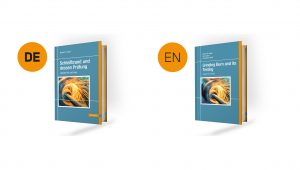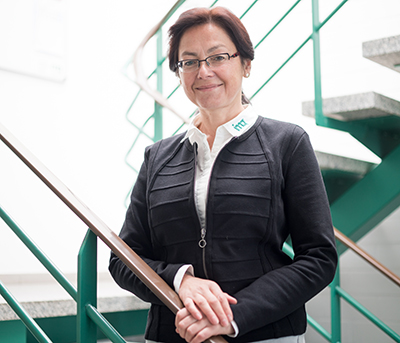BASICS AND BACKGROUND
WHAT IS GRINDING BURN?
Grinding burn results from thermic overstressing of the work piece surface which then faces structural changes and consequent internal stress changes within the edge zone and thereupon a local change in its material properties.
Literature recommended: Dr. sc. techn. Dr. rer. nat. Martin Seidel, member of the management of imq-Ingenieurbetrieb GmbH, is the author of the book “Grinding burn and its testing”. It explains you everything you need to know about grinding burn. It is also a practical guide for non-material scientists thanks to the glossary with technical terms and 90 minutes of video that visualize the basics very well. The book was published by Hanser Verlag in April 2020. You can order the book at vertrieb@imq-gmbh.com.

CAN GRINDING BURN BE AVOIDED?
The occurrence of grinding burn is caused by a large variety of factors. Matters of influence are the type of grinding wheel applied (type and structure of abrasive grits, dressing parameters, etc.), the grinding conditions (feed rate, cooling, etc.), the material (chemical composition, hardened structure, retained austenite contents), part geometry (dimensional tolerances, out-of-roundness, etc.) as well as the human factor (qualification, experience, diligence). Partly, these factors mutually influence each other, which means that even minor divergences may lead to grinding burn.
The danger of grinding burn occurrence may therefore be decreased by means of technology. In practice, however, the occurrence of locally “burnt” areas has to be expected at any time.
WHICH METHODS CAN BE APPLIED FOR THE DETECTION OF GRINDING BURN ON COMPONENT SURFACES?
A commonly applied method for grinding burn detection is the so-called nital etching method which exposes the surfaces to be tested to an etching process.
Non-destructive testing is applicable by means of electromagnetic procedures. These include eddy-current testing and the application of the Barkhausen effect.
WHAT ARE REFERENCE BLOCKS NEEDED FOR?
According to DIN EN 1330-4:2010 reference blocks are bodies featuring defined properties, in particular natural or artificial inhomogeneities. They are used for inspection respectively selection of the appropriate examination method by means of their undisclosed employment during the process.
For nital etching, ISO 14 104 and AMS 2649 require a regular examination of the etch bath condition as well as of the execution of the etch process itself by application of reference blocks.
For non-destructive testing by means of electromagnetic methods reference blocks are required as well.
WHAT IS THE LATEST STATUS OF TESTING STANDARDISATION?
Up to now, nital etching is the only method standardised according to ISO 14 104 and to the US standard AMS 2649.
For electromagnetic testing methods a standard concerning creation and application of reference blocks is in preparation (E DIN SPEC 4882 (draft)).
WHAT REQUIREMENTS ARE STIPULATED TO THE EXAMINATION AND SUPERVISION PROFESSIONALS?
The inspections are supposed to be performed by appropriately qualified and certified examiners only.
For nital etching in particular, a qualification for visual testing (VT) according to ISO 9712:2012 or ASNT TC-1A is of expediency.
Test supervision is recommended to be performed by either a technician or engineer or by a qualified testing laboratory.


